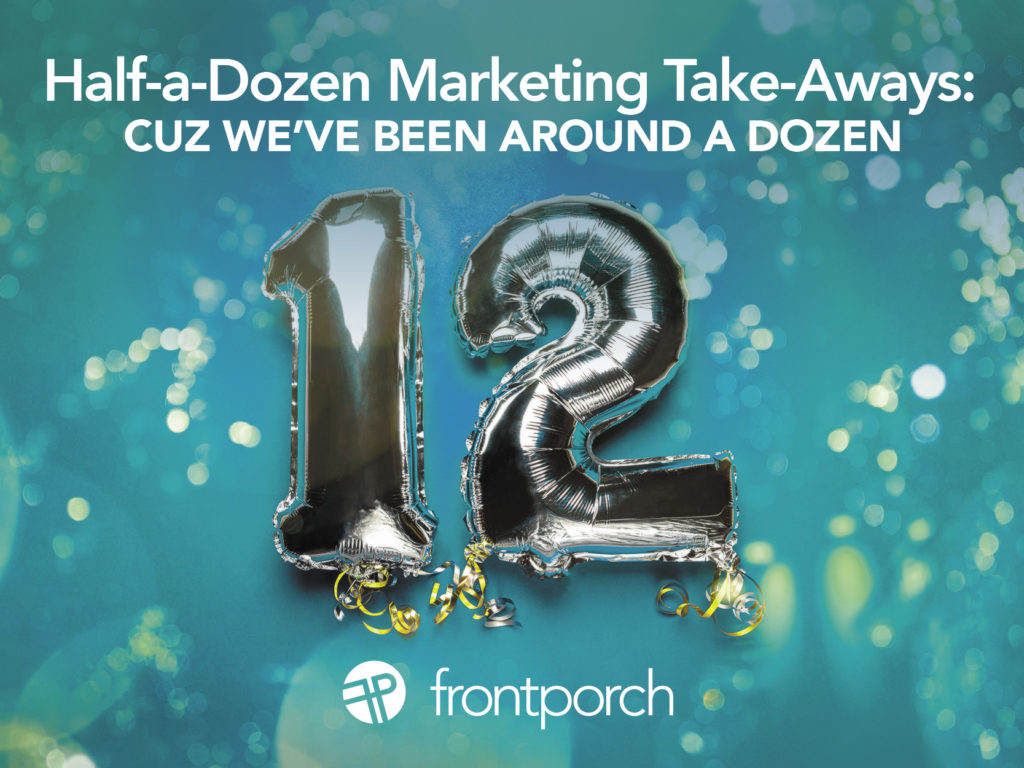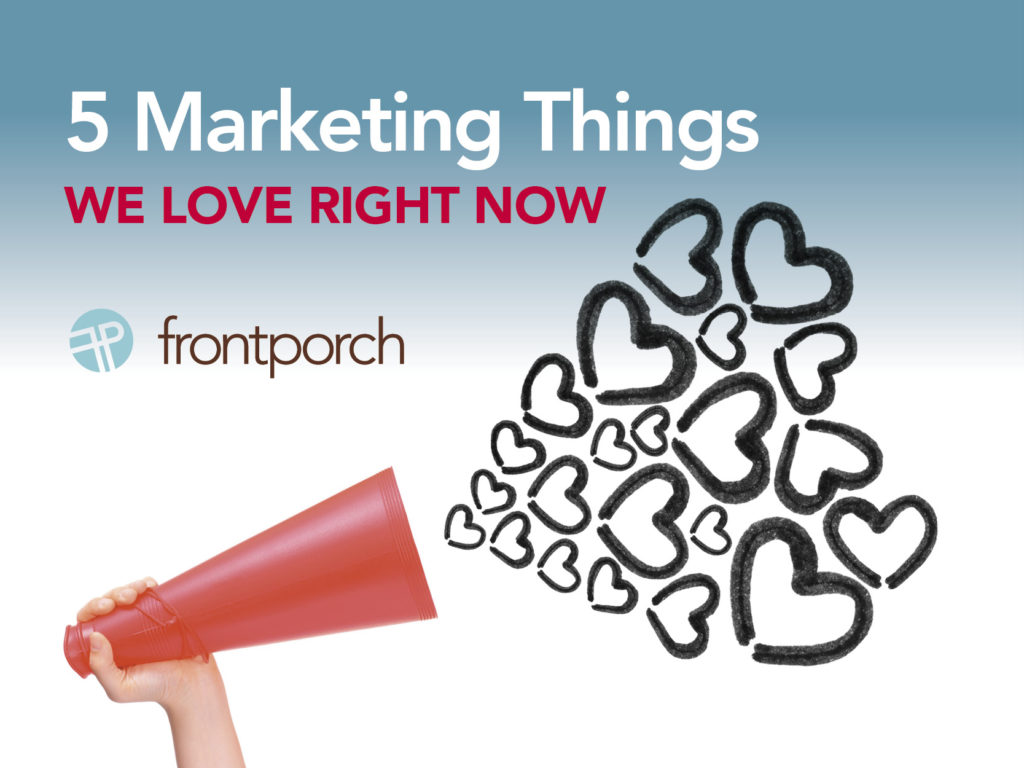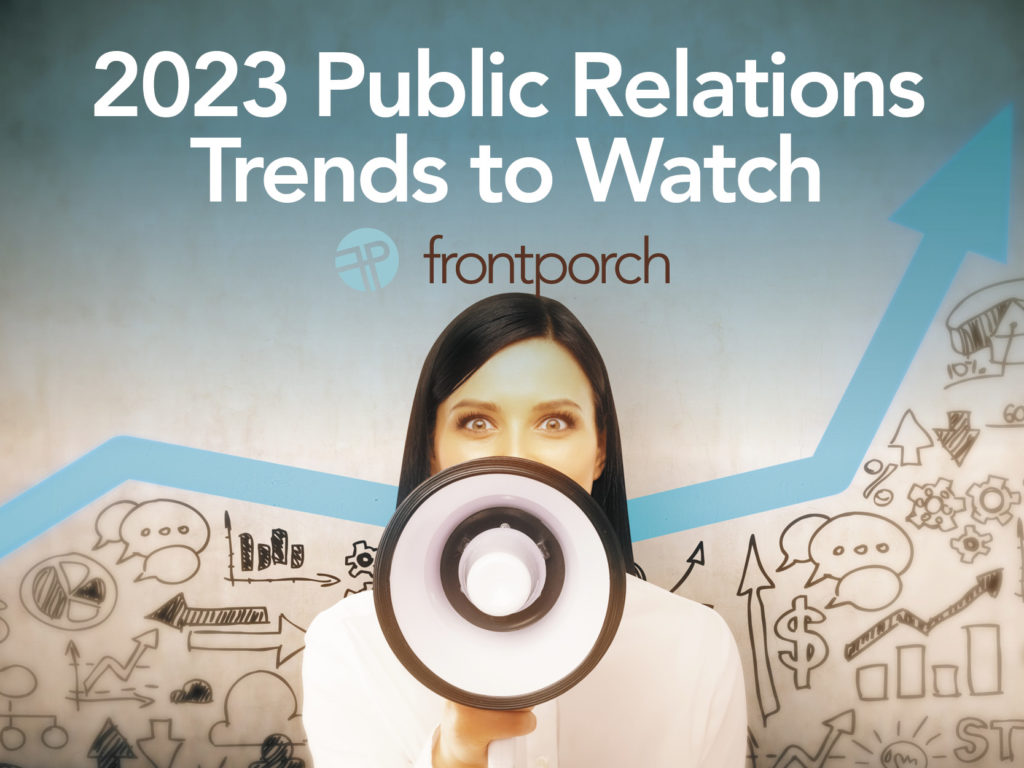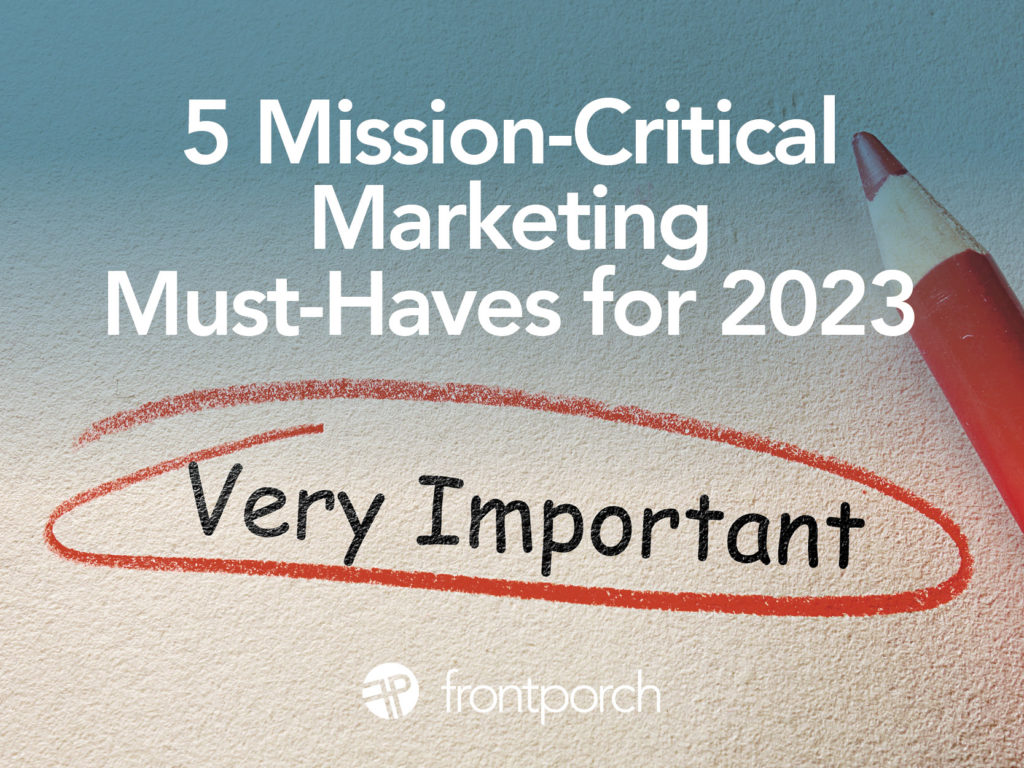
Front Porch Marketing is now 12 years old, thanks to you. What are our marketing take-aways from the past 12 years? We value your support and confidence in us over the years! You and your brands are our jam.
Marketing Take-Aways to Help Your Business Grow
Reflecting back on client trends and opportunities, on our pearl anniversary, we share common pearls of wisdom we saw at the beginning and continue to see today. We hope these marketing take-aways spur some thinking for you!
1. DIY Marketing
It only gets a brand so far. And, once your brand is established and has credibility, DIY marketing is no longer good enough. Time to take your garage band to the main stage. Hire a professional or firm.
2. Hiring One Marketing Person to Do All the Marketing Things
There are only a handful of unicorns on the planet that can do all the things marketing. If you go this route, know they need support. A marketing generalist isn’t your graphic designer, copywriter, webmaster, etc. Give them the resources they need to do their jobs.
3. B2B Websites
We hear from business owners their websites aren’t a priority and aren’t a sales and marketing tool. Not true. What we see most often is that you aren’t closing the sale or getting to the next round of meetings because you are getting the veto vote when potential clients go to your website to validate your credibility. Important marketing take-away: your website is your virtual office. Optimize it!
4. Marketing Take-Away for CEOs, C-Suite Executives or Managing Partners
Your role is strategy, operations, finances, and managing people. We have experienced too many times when you want to get too far in the weeds managing marketing. At that point, bottlenecks happen and marketing doesn’t happen at its best or consistently.
5. Brand Architecture
Without brand architecture, your branding is inconsistent. Define your brand mission, personality, positioning and affiliation. Let all things marketing flow from there. This becomes the filter and guidepost for branding and marketing strategy as well as execution.
6. Shiny Objects
You have Salesforce, but your team isn’t utilizing it. Then you get Hootsuite and ZoomInfo and, and, and. Stop right there. Marketing operations take-away: Make sure whatever technology you currently have is being utilized to its fullest. Then, if needed, build upon that with other tools.
Marketing Take-Aways to Take You Through the Next 12 Years
Cheers to you! Thank you for trusting in us, believing in us and getting us to our 12th anniversary. Without your support, we wouldn’t be rockin’ on the Porch today and lovin’ every minute of it. We hope these 6 marketing take-aways will be helpful for your business as we grow together over the next dozen years!









